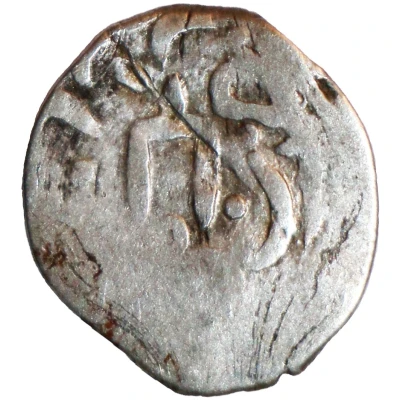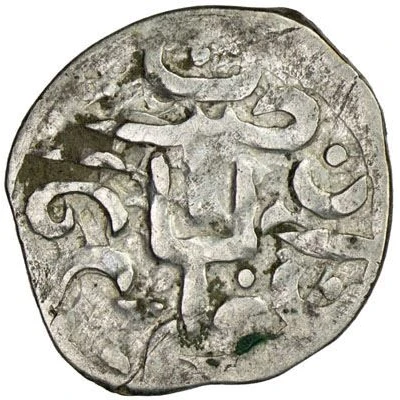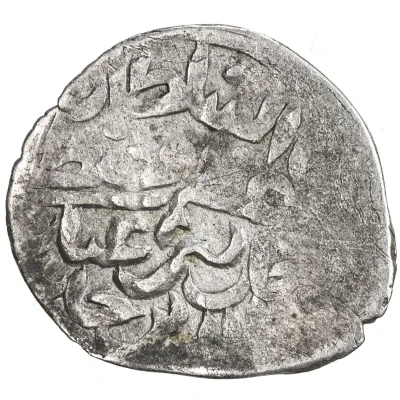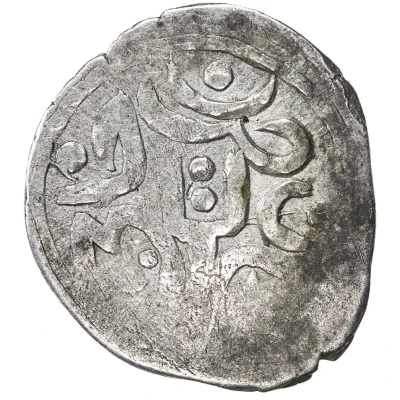


Dirham "Aqche" - Sayyid Ahmad II Haydar Bik Bazari ND
| Silver | 0.7 g | 15 mm |
| Issuer | Golden Horde |
|---|---|
| Khan | Sayyid Ahmad II (1433-1435) |
| Type | Standard circulation coin |
| Years | 1433-1435 |
| Value | 1 Dirham / Dang / Yarmag (0.7) |
| Currency | Dinar (1227-1502) |
| Composition | Silver |
| Weight | 0.7 g |
| Diameter | 15 mm |
| Shape | Round (irregular) |
| Technique | Hammered |
| Orientation | Variable alignment ↺ |
| Demonetized | Yes |
| Updated | 2024-10-06 |
| Numista | N#355079 |
|---|---|
| Rarity index | 97% |
Reverse
Tamga with Islamic legend around, starting at 2 o’clock
Script: Arabic
Lettering: ضرب حیدر بیك بازار
Translation: Haydar Bazaar Mint
Comment
See also Zayonchkovskiy-Tishkin, 'A new non-Jochi name on late Jochi coins: Dands of Khan Said-Ahmad III with the mint name of Haydar-Bazari', for obverse and reverse dies and Zayonchkovskiy Y. Political Career Kungrat Bey Haydar in Numismatic Data (Mid-1420 – Early 1440's) (in Russian) for the mint data.
Picture from the abovementioned articles:
According to Y. Zayonchkovskiy, mint can be read as Haydar [Beg] Bazar that means the coins were minted at nomadic mint in the hoard led by kongrat's Bek Haidar who presumably in the middle of the 1420-ies becomes beklarbegi of Khan Dawlat-Birdie, and, when the last in 831 AH seized the Central ulus of the Golden Horde, betrays him, turning to the side of the Ulu Muhammad. It can be assumed that it was this betrayal that caused the death of Davlat-Berdi and led to the rise of Haidar Bek at the court of Ulu Muhammad.
After some time, Haidar betrayed Ulu Muhammad, placing on the throne (about 1433) of Khan said-Ahmad II and held the post of beklerbek until his death in 1441. The death of Haidar-Bek contributed to the ascension to the throne in the Crimea in 1442 of Haji Giray and the weakening of the position of Khan Seyyid-Ahmad II.
Interesting fact
The coin , the Aqche Dirham, is interesting because it was used as a form of currency during the Golden Horde, which was a Mongol khanate that ruled over much of Eastern Europe and Central Asia during the 13th to 14th centuries. The coin was made of silver and weighed 0.7 grams, which was a significant amount for a coin at that time. Additionally, the coin features an inscription in Arabic that reads "Al-Sultan al-Azam" (The Greatest Sultan), which highlights the importance of the Mongol Empire and its rulers during that period.



